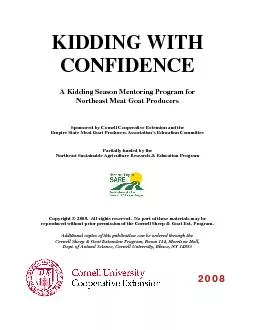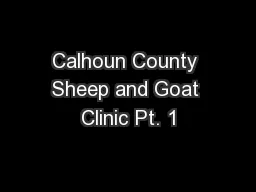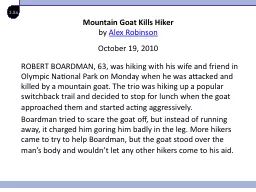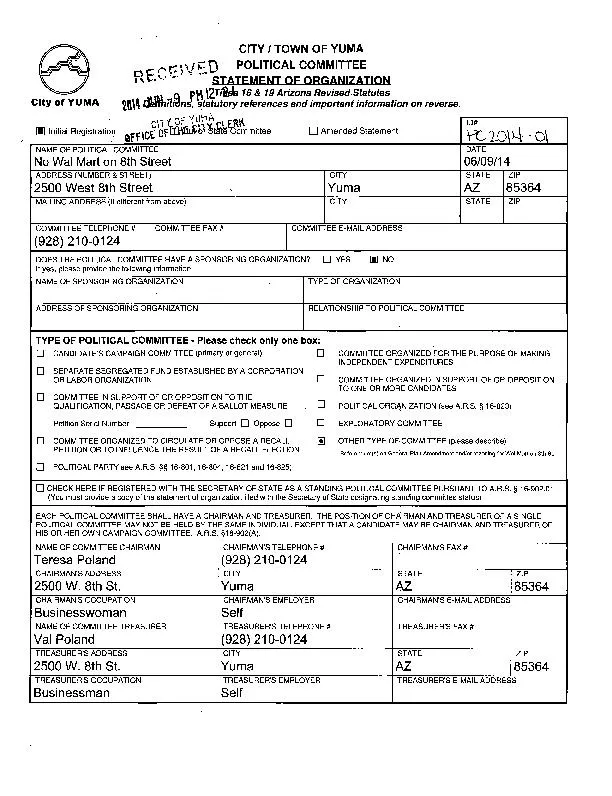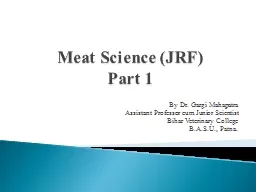PDF-Empire State Meat Goat Producers Association’s Education Committe
Author : phoebe-click | Published Date : 2015-08-21
reproduced without prior permission of the Cornell Sheep Goat Ext Program Additional copies of this publication can be ordered through the Text Dr tatiana Stanton
Presentation Embed Code
Download Presentation
Download Presentation The PPT/PDF document "Empire State Meat Goat Producers Associa..." is the property of its rightful owner. Permission is granted to download and print the materials on this website for personal, non-commercial use only, and to display it on your personal computer provided you do not modify the materials and that you retain all copyright notices contained in the materials. By downloading content from our website, you accept the terms of this agreement.
Empire State Meat Goat Producers Association’s Education Committe: Transcript
Download Rules Of Document
"Empire State Meat Goat Producers Association’s Education Committe"The content belongs to its owner. You may download and print it for personal use, without modification, and keep all copyright notices. By downloading, you agree to these terms.
Related Documents

